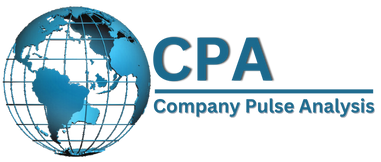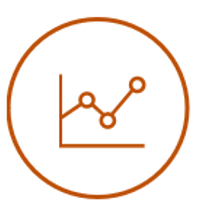WORKING CULTURES
Working cultures require regular monitoring because things can change fast, requiring management to deliver fair and ethical leadership and set unambiguous expectations and standards. Despite shared goals, unmet personal values can hinder commitment.
The CPA clearly shows disruptive cultural situations, circumstances and patterns, providing management focus for reducing associated risks.
Common Working Culture Challenges
Imposed Workload & Timeframes - Poor Communication - Micromanagement - Excessive control and oversight - Toxic Environment - Lack of Work-Life Balance - Bureaucracy - Resistance to Change - Low Employee Morale - Unclear Goals - Inadequate Recognition - Lack of Trust - Stagnant Growth Opportunities - Unproductive Meetings - Inflexible Policies - Poor Leadership - Silos and Lack of Collaboration - ...

Prevention is better than Cure
Research shows toxic Working Cultures cause severe damage to a company's reputation and sales, with blame landing squarely on the shoulders of the leaders.
The costs vary substantially and staff turnover is a main indicator reflecting toxicity levels, so knowing the causal factors offers a direct approach to addressing the issues.

Working Cultures and the CPA
Leadership
Driving Forces
Company Viewpoint
Work Colleagues
WITH YOUR COMPANY OR CLIENTS IN MIND.

The CPA is built to increase agility by quickly identifying clients operational challenges across multiple Business Elements that are or could increase risk and hamper progress.

We understand the complexities of aligning a company workforce with company direction and the importance of knowing priorities, so the system is designed to clear the way for decision-making.

Regardless of industry, Management has dynamic and direct access to core information which clearly shows what is working well and what aspects require attention.
Contact Us

For More Information Please Contact Us FOR A Personal or a REMOTE PRESENTATION
TEL: +61 (0)413 292 825
Email: [email protected]
DESALLEN PTY LTD.
CRA - OVERVIEW.
Welcome to Company & Culture Risk Analysis (CRA)
The CRA is based upon the Premise which is:
" A person cannot demonstrate their true potential and giftedness in a working environment, if their personal standards and values are not being met or fulfilled."
"The CRA is a powerful Management Tool that allows the Identification and Quantitative measurement of Risk and Problematic Aspects of an organisation.
Critical Aspects Essential to the Running of the Company are Selected for Measurement
(CRA Risk is anything that impacts the company from an Operational, Financial or Legal aspect.)
Any aspect of the business can be assessed and measured to determine:
- What Kind of Problem Exists
- Where in the Company It Exists
- Why it Exists
- To What Extent it Exists
- And the Potential Financial Exposure to the Company
This provides valuable, meaningful and focused data to Senior and Middle Management to bring awareness and speed the Risk Mitigation processes.
JOB / ROLE: - Benefits
Keeping Your Staff is a Better Proposition
- Know the extent of satisfied and dissatisfied employees in relation to their work duties.
- Identify those at a high risk of leaving, due to outgrowing their role & responsibilities.
- Financial estimates of budgetary requirements to replace and retrain staff losses.
- Determine the potential losses across all or selected locations in the company.
- Estimates of lost productivity due to dissatisfaction and/or poor attitudes.
- Identify the causes of job related Satisfaction or Dissatisfaction (Individuals or Teams)
OPERATIONS - PROCEDURES
Ensuring Operations, Procedures & Systems
Support Employees Duties
The internal operations require many processes to ensure information is received when it is needed, however this information flow is often disrupted due to poor and inefficient processes and procedures causing delays. Knowing what supports or inhibits employees from performing their duties and why can save substantial amounts of time and money.
The CPA shows:
COMPANY CORE VALUES (CCV's)
The Ideals and Aspirations of the Company
& Walking the Talk.
- Know if the company Vision and Standards are being Undermined.
- Identify alignment gaps between company core Requirements and employee Needs.
- Shows what company aspects are impacting achieving the Company Vision.
- Shows if Leadership Behaviours adhere to and are aligned with achieving CCV's
- Identify locations where CCV’s are at Risk.
VIRTUAL TEAMS - Benefits
Helping Managers Lead Remote Workers and Virtual Teams
In Isolation, yet still being part of the company.
- Support teams or departments even though they work remotely or are office based
- Ensure resource requirements are catered for.
- Identify those where wellbeing is being challenged.
- Determine how effective Team Dynamics are by Department
- Validate environmental factors that help or hinder daily throughput.
- Identify the extent of technical issues i.e. equipment and internet.
DIVERSITY & INCLUSION - Benefits
Combining the Power of Diversity & Inclusion)
Diversity:
Knowing the extent to which the company is open to taking advantage of the talent, experience, perspectives, innovation and creativity offered by a diverse range of people can be a great asset.
- The CRA allows for defined focus on key aspects of Diversity that support any internal compliance standards and Values.
Inclusion:
Although there may be a diverse representation within the workforce, but to what extent are personnel allowed to express and contribute by being included?
How do members of the workforce feel towards being able to demonstrate their natural talents through full participation and offer their perspectives, expertise and knowledge?
- Quickly see how aligned Diversity & Inclusion is with Company Core Values & Standards.
- Monitor & Manage Inclusion to avoid rendering Diversity to ineffective levels.
COMPLIANCE & LITIGATION
Reduce Litigation Costs
- Offer provisions for Workforce Wellbeing through Our Employee Support package.
- Ensure Legislative Compliance Key Indicator requirements are aligned and met within Operational standards.
- Options to customise Review Types to align with Key Compliance Indicators.
- Monitor and ensure policy adherence across multiple areas e.g.
- Leadership
- Risk Assessment
- Policies and Procedures
- Training and Communication
- Oversight and Reporting
TEAM DYNAMICS
Developing High Performing Teams
- Quickly and easily identify what drives Team Effectiveness.
- See clearly where issues with interrelationships and the capacity to work together and maintain throughput are being affected.
- Establish a source of work context criteria and correlate so they can be used to replicate in other less functional teams.
- Identify where acknowledgment and reward are to be offered to maintain their commitment.
- Quickly determine where changes in a team influence the dynamics and are working, or may be creating divergence.
COMPLIANCE & LITIGATION
Tougher legislation is compelling organisations to be more accountable for their Actions, Decision-making, Operational Procedures and their support for workforce wellbeing.
Options to customise Review Types to monitor potential risk against Key Compliance Indicators:
- Leadership. ...
- Risk Assessment
- Policies and Procedures
- Training and Communication
- Oversight and Reporting
INTERNAL TALENT ACQUISITION
Retaining Staff is a Far Better Proposition:
Overview:
Finding experienced personnel is an ever growing problem. With the the ITA Module of the CRA it helps organisations fill positions internally (and externally), through greater awareness of employee skills and strengths and the monitoring of satisfaction levels.
It quickly shows:
- The alignment of candidates skills and strengths against strengths required for vacancies
- Those who have outgrown their current role and are dissatisfied.
- Why they are dissatisfied and the potential risk of losing them.
Management showing interest in their employees growth, development, goals and aspirations have a greater chance of keeping them and avoiding the costly and disruptive replacement process.
SENIOR EXECUTIVE AWARENESS
Real-Time Risk Reporting and Measurement for Board and Senior Directors that allows focused and faster decision-making.
The advent of the Corporate Accountability Act in 2019 demonstrates that "Ignorance of the Fact" or "Not Knowing" is no longer acceptable. Good Leaders and Managers (in general) Do Know what's going on because they make it their business to know and are prepared to take action to mitigate risk situations and circumstances.
The CRA allows the bypassing of the often time consuming hierarchal flow of requested information, by allowing direct access to any part of the company and see risks that exist or are in the process of developing, real-time.
Meaningful information is presented to bring Risk Culture and the implications of inaction, into the Board Room.
ACCOUNTABILTY & TRANSPARENCY
Having transparency at all levels by knowing what, where, the extent and why any dissatisfaction and risk is developing or occurring anywhere in the company, means that a focused approach to monitoring and maintaining motivation and performance can be more easily introduced.
When the general workforce see "being accountable" in action, it helps develop confidence and bridges the gap between the 'Us' and 'Them' that so often exists.
The CRA results themselves, will justify the importance of having high levels of transparency.
All personnel are accountable for their levels of responsibility and this includes the more senior members of the "Corporate Cultures" that exist and which are normally hidden from the general workforce.
EXECUTIVE ANALYSIS
There is a common saying in business, which states, "there are no friends in business". However in business there are many strong friendships created due to professionalism, integrity and other positive defining characteristics of how people conduct themselves.
The capacity to know your 'station', yet have the capacity to express viewpoints without retribution, adds to the development of strong and trusting work cultures.
Professionalism in how work duties and responsibilities are carried out, lays foundations for the development of trust and commitment common goals.
CRA brings definitive awareness of key factors and characteristic patterns, that enhance or inhibit professional relationships that directly impact staff engagement and motivation towards common goals.
Historical monitoring can lay a foundation for developing internally, Executive and Management potential.
COMPANY VALUES ALIGNMENT
Walking the Talk!
Company Values are intended to be the "compass" and corner stones of the company as it navigates its chartered course towards achieving its ultimate goal - The VISION.
The CPA measures the relationship between Company Values and the Workforce Values and offers data that determine if there is Divergence or Convergence regarding company direction. The Analysis reporting shows:
WORKING CULTURES
Understanding the Workforce Motivations
PURPOSE & MOTIVATION
The role of leadership is very difficult and time consuming where personnel have lost the motivation to commit. Company objectives mean little and are not of interest to disengaged employees.
Something deeper is required to be addressed, and coercive approaches are very short term motivators (although needed at times).
All personnel require specific things in order to maintain motivation and a sense of purpose and achievement.
In the majority of cases it does not take much, to return a sense of work related purpose and improve the motivation, but it requires recognition and awareness of the conditions or circumstances that are fuelling the lack of commitment and how widespread the conditions or circumstances are.
Leaders can easily identify the motivational requirements needed for any member, team or group, from any part of the company and help maintain their sense of purpose, so they can continue to give their best.
LEADERSHIP & MANAGEMENT
All of management are human too! Pressure and stress does not discriminate.
With the changes that companies and corporations are undergoing, particularly with experienced employees being so transient, good leadership and employee relationships are paramount,
HOW ARE YOUR MANAGERS & LEADERS DOING?
The CPA offers analysis across All Management, providing:
- Where management excellence is being showcased
- Leadership styles that are self-evident and require intervention to correct
- Specific aspects of leaders behaviours to encourage role modelling or up-skilling
- The interpersonal skills possessed by individuals for executive leadership development
- The skillsets exhibited in their respective areas of responsibility
- The influence of management styles on staff achieving key performance indicators (KPIs)
- The potential financial consequences of productivity decline due to poor leadership.
- Historical comparisons of management styles
- Needs for further Learning & Development to align with Core Values
- ...
TRAINING ALIGNMENT
Companies Invest vast amounts of money on training personnel. Generally speaking, technical and mechanical skills based training can achieve a faster return on investments due to the more tangible nature of the training subject. It can be easier to implement and introduce the benefits accordingly - it does of course depend upon any 'Standards' that may be required to be adjusted.
Soft Skills, on the other-hand, (which in fact can be very hard) are far more difficult to implement due to numerous fluid and variable factors that can influence a human being - for the better and for the worse.
The message here is, that investment in soft skills learning & development is not always clear cut.
Either way when causal factors are clear L & D can apply resource to specific trainings in specific areas of the business that actually need it and and ensure better resource utilisation.
This improves a better ROI on L & D investments.
STAFF TURNOVER RISK
Quickly identify risk associated with staff disengagement and the financial exposure of losing staff members. Personnel leave for a reason, so know before they go - Exit interviews are too little too late.
It's common knowledge that disengaged and dissatisfied personnel are an enormous cost to a company. If they leave the replacement costs, cost the company even more.
The CRA identifies those at risk and provides an opportunity for employees to voice their concerns without fear of retribution, before it becomes unresolvable.
The company and the employee have a greater chance of solving the situation(s) and returning the employee to an engaged status.
SYSTEMS & OPERATIONS
Aligning Systems and Duties
Organisations investments in technology and manual systems are impressive and they endeavour to improve work flow and aid in the performing of personnel's duties.
Knowing to what extent the alignment between systems used, duties performed and results produced can ensure that anticipated benefits are being achieved and effectiveness is maintained.
Not all departments use a system to it's fullest potential and operational procedures can be convoluted and complex rendering them inefficient.
The CRA allows systems and procedures to be assessed to determine efficiencies and shortfalls and to what extent users are happy with the process, procedures or the technology in relation to their specific duties.
This allows monitoring to fine tune and improve upon departmental operations and throughput.
VIRTUAL TEAM PERFORMANCE
Virtual & Remote Teams and Workers require a different approach and focus.
Currently for many managers the COVID 19 situation has been 'New Territory' and a little unsettling, especially if they have come through the ranks in the office environment. How do you manage someone who is not there??
Remote workers are often required to await input from other sources, deliverables from other processes and essential information from departments, in order to complete their tasks and deliver their output, as part of the service/operational flow.
Where there are delays that disrupts output performance and potentially affects Personal KPI's.
The CRA offers Management the capacity to focus on all their reports and address key information and deliverables flow issues to determine if it's an isolated or a common problem across the team or department.
The simple feedback reporting process provides for specific and faster risk mitigation to help Remote or Virtual workers maintain their work throughput.
Origins of the Culture Risk Analysis
The CRA is a product of having spent 25+ years working in the corporate sector consulting and conducting workshops for major organisations locally and internationally.
This background coupled with previous years as an IT and Business consultant and studies in Organisational Behaviour, Abnormal Psychology and Psychotherapy, provided golden opportunities to work with the some of the worlds largest organisations.
A small example include:
IBM: For 5 years on IBM's World Wide Project management initiative facilitating Project Leadership and Advanced Leadership workshops.
Fletcher Challenge: 10 years delivering Leadership and Behaviour based workshops, Fatigue Countermeasures and Emotional Energy Management Workshop
Hewlett Packard: 4 years with Hewlett Packards delivering Leadership and Project Management Fundamentals and accepted multiple invitations to deliver training at their annual Project Management University gatherings.
Singapore Airlines: 3 years facilitating Team Dynamics and Work Culture based workshops.
Shell Oil: 4 years delivering Project Leadership and Emotional Energy Management (Working in High Pressured Environments) workshops Leadership and Cultural change across Sth. East Asia. (For more see desallen.com)
This international exposure enabled closer inspection of how working cultures developed and how management - employee relationships differ country to country, yet have commonality.
WORK-FORCE CULTURES
Every Group of Workers will Define their own Working Culture
People join a company for “Gainful” employment. It’s a Self-Oriented decision - its about them and them gaining something. When they see they can no longer gain, they leave or become part of the "Disengaged" group, unless they can be offered the opportunity to keep growing.
The CPA provides the company, opportunity to easily identify what they are seeking to further themselves and keep them engaged. The system shows:
For a No Obligation Presentation
3 Fundamental Principles
Key Questions:
FUNCTIONALITY: “The quality of being suited to serve a purpose well.”
• Is what we are doing achieving our goals and aspirations to the best of our ability?
• Is what we are doing serving us as a company given what we wish to achieve?
• Is every manager and employee functioning efficiently and engaged in their duties?
ADAPTABILITY: “The quality of being able to adjust to new conditions.”
• Is the way we are conducting businesses in line with current trends and markets?
• How prepared are we for instigating new ideas and change when needed?
• How set in our ways are we in keeping the status quo?
• Are we monitoring for the need to maintain Functionality?
REGISTER YOUR SPOT NOW
Enter your details below to get instant access to [enter lead magnet name here]
We process your personal data as stated in our Privacy Policy. You may withdraw your consent at any time by clicking the unsubscribe link at the bottom of any of our emails.
LEADERSHIP - Benefits
Getting to Know Your Leaders.
How good are your Leaders?
- Quickly determine how good leaders across the company engage their staff and offer opportunity as role models.
- Identify leadership styles that unsettle and create uncertainty.
- Highlight candidates for an executive ‘Pipeline’ to further their professional development.
- See how well leaders comply with and align with Company Core Values.
- Ensure leader responsibilities are maintained at every level of management.
- Offers a focused and relevant Platform for communication with Staff.
MOTIVATION: - Benefits
Strengthening Staff Relationships
- Awareness of the personal Motivational needs of every Department & Employee.
- Identifies exactly what undermines employee motivation (Individually or Group)
- Offers a platform for Managers to improve Team Communication and Trust.
- Identifies leadership strengths for furthering internal career paths.
- Clearly identifies the extent of those at Risk of Leaving.
- Offers the rationale for pre-emptive action to Retain Talent.
- Estimates the Cost of Lost Productivity due to Levels of Disengagement.
WORKING CULTURES
Every team or department through the working interrelationships, form their own unique working culture.
Neque sociosqu consectetur amet tincidunt proin aliquam.
We process your personal data as stated in our Privacy Policy. You may withdraw your consent at any time by clicking the unsubscribe link at the bottom of any of our emails.



